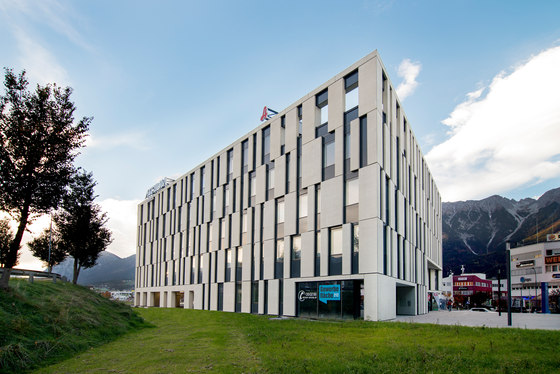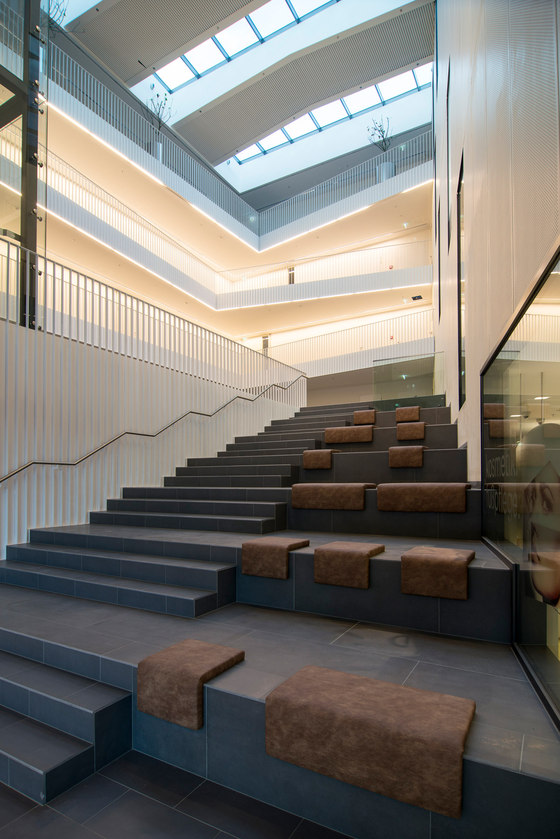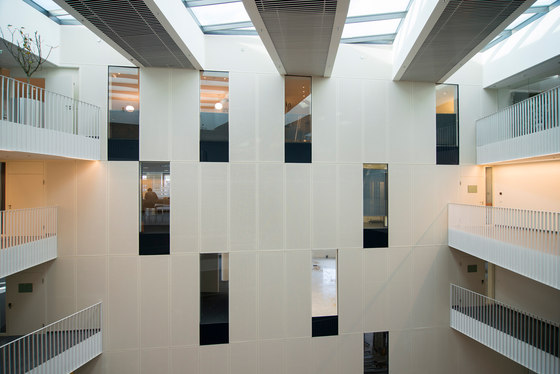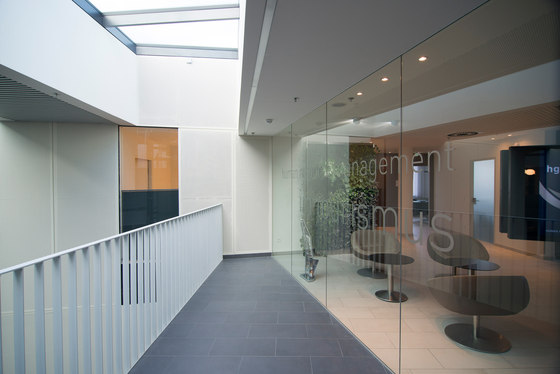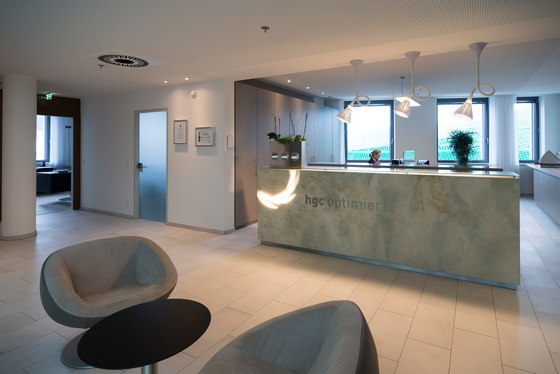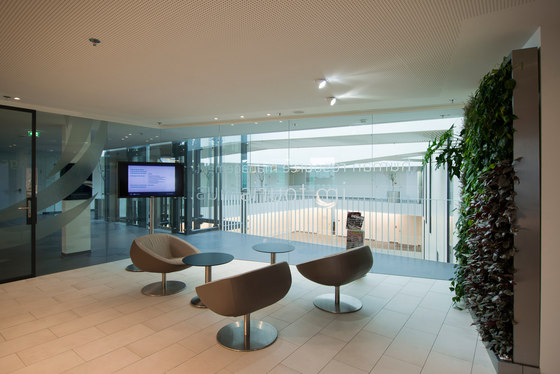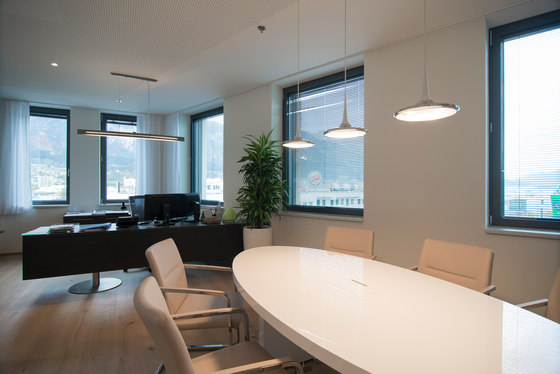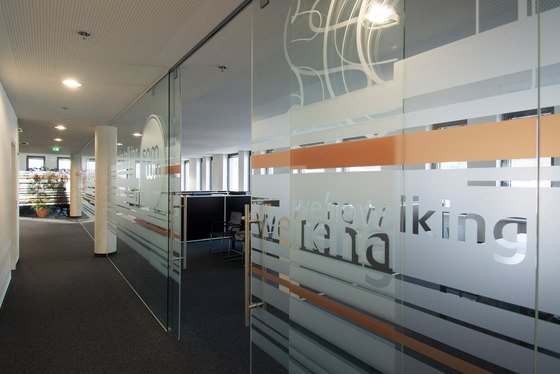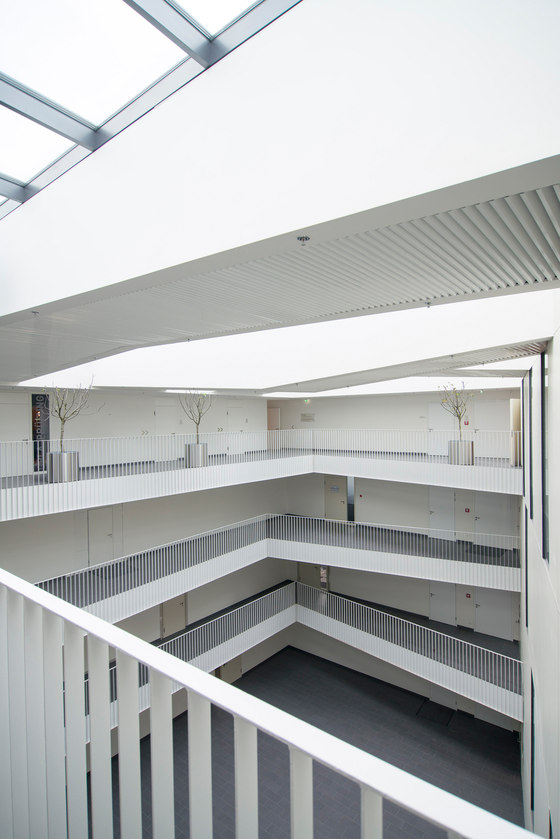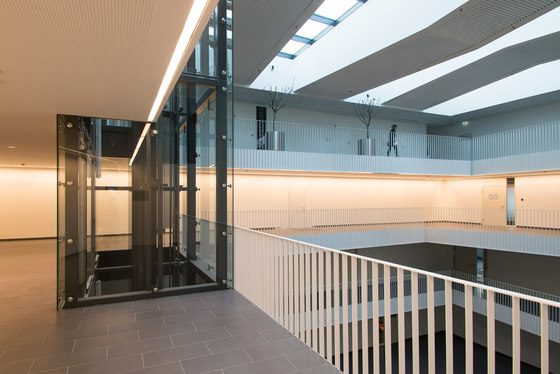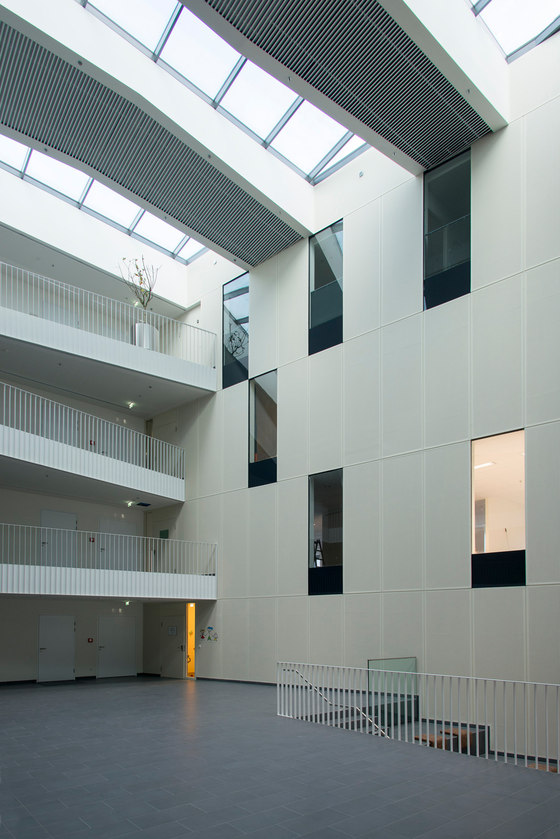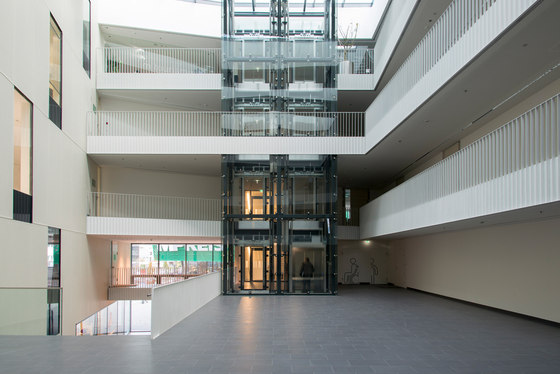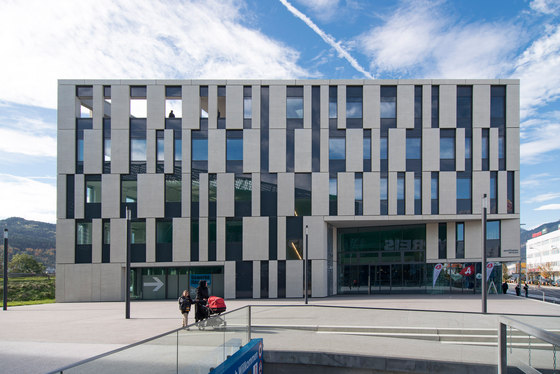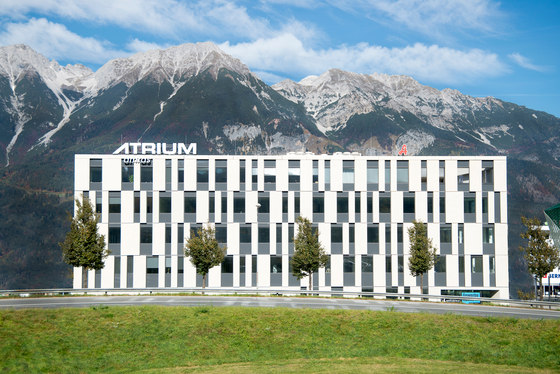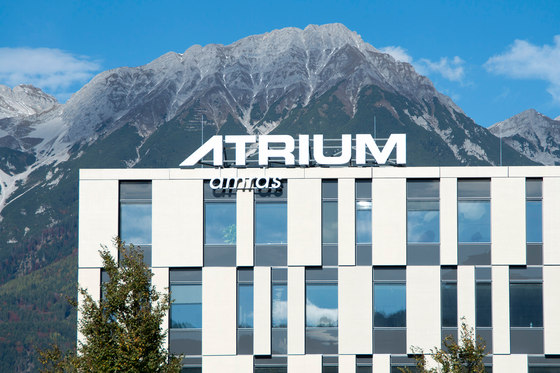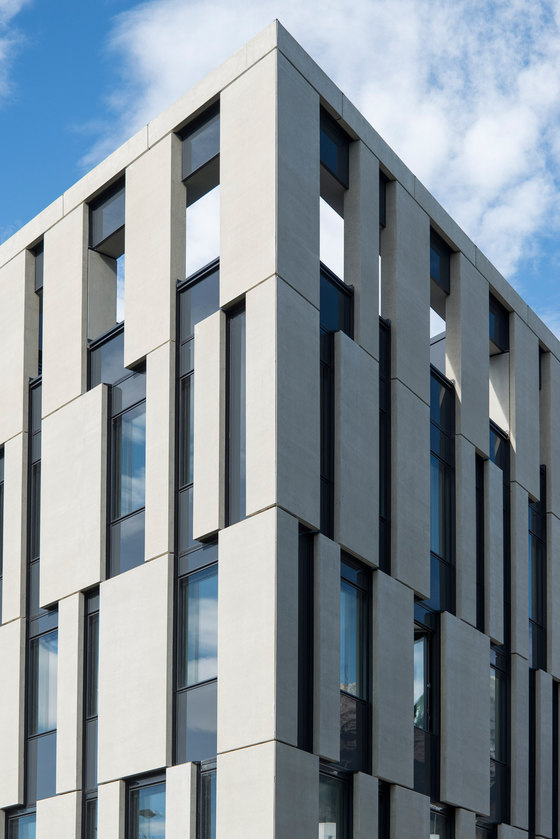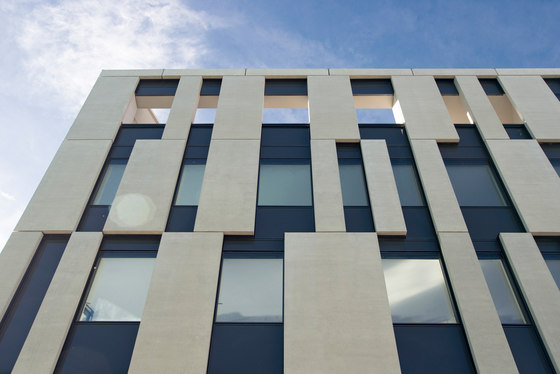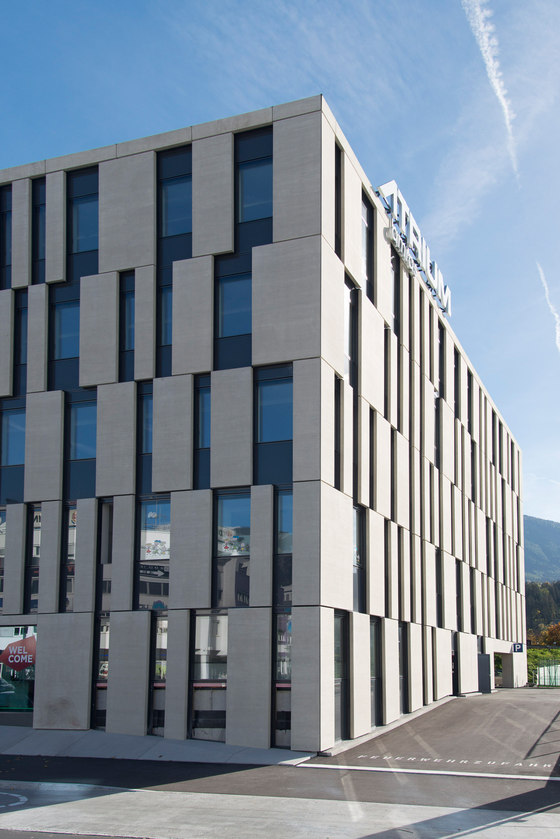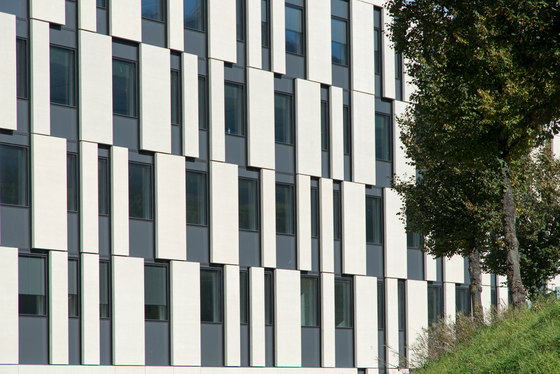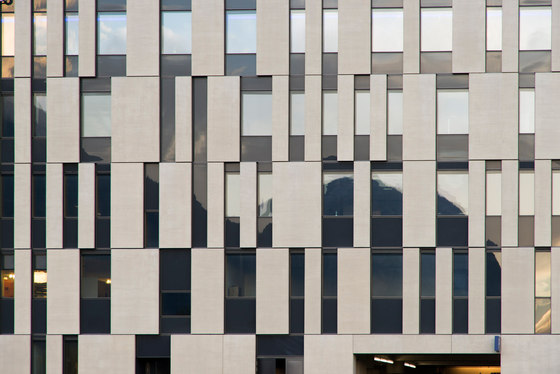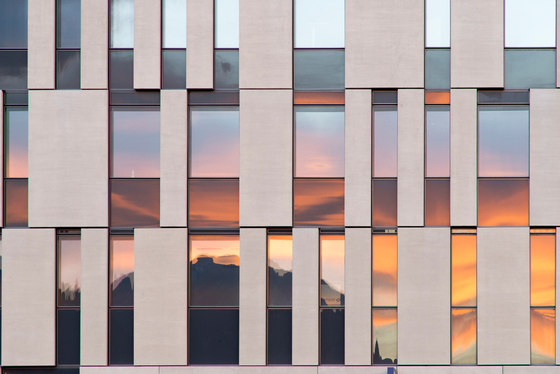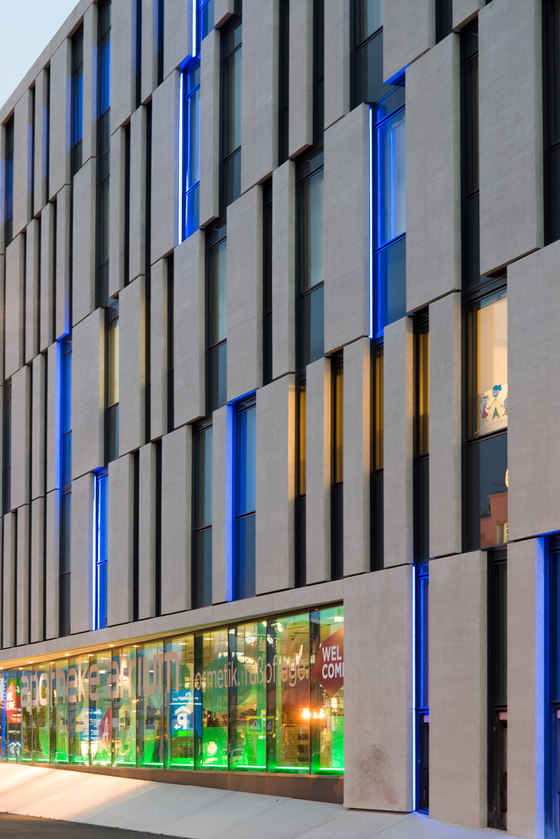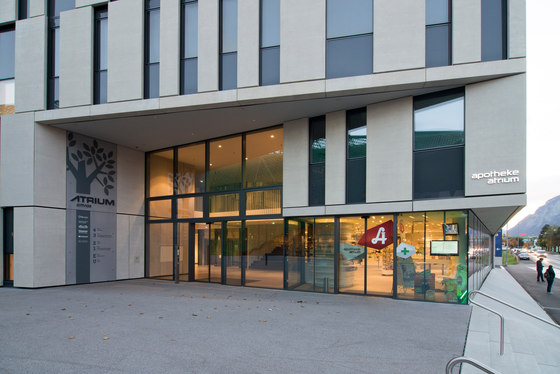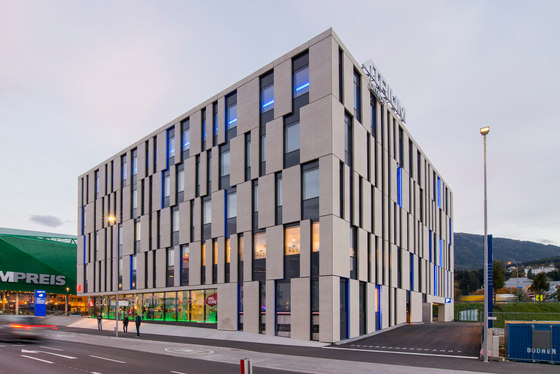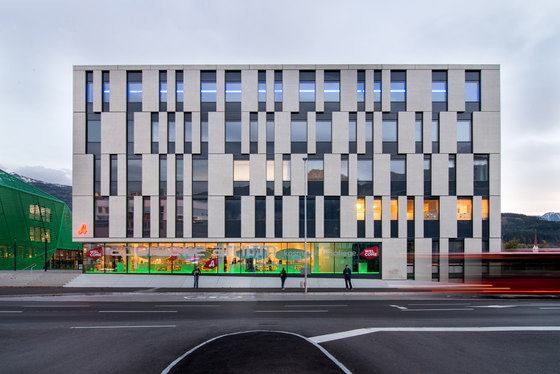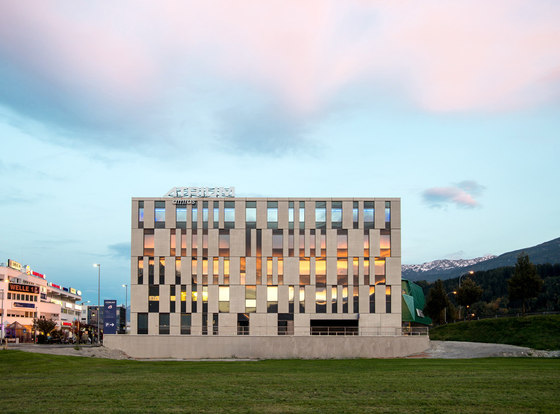The brief was to plan an office building with low energy consumption on the periphery of Innsbruck. The site operates as a gate to the city, due to its proximity to the Innsbruck Ost transport hub.
Compact Structure – an Atrium Flooded with Light
The building has an almost square ground plan, resulting from the layout of the development, and was designed as a type of atrium. The ground floor is raised by approximately 1m from the surrounding street level to avoid the underground parking coming into contact with groundwater. The entrance, which is connected to the neighbouring building that contains a furniture store, is also raised in this way to create a shared forecourt. The main entrance of the office building is therefore oriented towards this forecourt, and in addition the facade is rotated over two floors to mark the entrance and create a roof. Access to the pedestrian forecourt is via inclines, a wide staircase and a wheelchair ramp.
Access to the interior is through the roofed inner area, which extends over multiple floors. Stairs that resemble bleachers lead from the entrance foyer on the ground floor up to the first floor, where a multipurpose area for small events and meetings is located. The word ‘atrium’ inspires the building's name, and the atrium also provides important spaces within the structure to facilitate communication and interaction. On the ground floor of the five-storey building there is commercial floorspace, including a pharmacy. Office space with flexible configurations is located above, as well as studios and doctors' practices. Access to the units is via arcade-like corridors. The office spaces located around the atrium are organised to provide variable layouts of differently sized rental units. Alongside the interaction space of the atrium, a roof terrace provides another semiprivate meeting point for people employed within the building. The large terrace on the top floor also emphasises the views that the site provides of the surrounding mountains and Ambras Castle to the south.
A Facade that is an Interplay of Contrasts
The facade is constructed from precast concrete components, each the height of an individual storey. These create a nonuniform grid composed of two differently sized window openings that alternate to form a varied pattern. The windows are a composite design with slim profiles and sun protection systems fitted in the middle for protection from the wind. The slight offset of the facade elements at each storey creates an interplay of light and dark, marks the edges of each level and makes it possible to read the floors. The contrast of light and dark is intensified by differences in the roughness of the surfaces. The rough and matt sandstone-colour concrete surfaces are contrasted with smooth reflective glass elements. The exterior shell of the building is such a distinctive part of the structure that it becomes a corporate identity and an icon for the project. The exterior walls are load bearing and are constructed from site-mixed concrete, to avoid the use of supports near the facade. The large parapets prevent fire spreading from floor to floor. Two cores reinforce the building frame, and house the staircases and shafts. The ceilings are unstressed reinforced concrete without joists. The upper ceiling is constructed using glued-laminated boards that function as box girders.
Lean Technology - Low Energy
The optimum mix of transparent and closed exterior wall surfaces, high-quality exterior insulation and glazing provides waste heat recovery that gives the building an energy efficiency class of A+, with HWBref of 13.6 kWh/m2a. The office windows are a composite design that has optimum building physics performance. Тhe structural properties allow a lean HVACR design. With the neighbouring project, ‘Leiner / Mpreis’, synergies were created, both in relation to the surrounding buildings and in shared transport systems. Alongside the jointly designed and used forecourt, shared entrances and exits to the underground parking reduce the space required for private vehicle access.
Atrium Amras GmbH / Hans Bodner BaugesmbH, Kufstein
Zechner & Zechner ZT GmbH
Structural engineer: ZSZ Ingenieure, Innsbruck
Building equipment (HVAC, Electric): Ingenieurbüro Kainz PlanungsgesmbH., Innsbruck
Lighting design: Lichtdesign Gratzel, Innsbruck
Building physics: Spektrum, Dornbirn
Fire protection concept: IBS, Innsbruck
General contractor: Hans Bodner BaugesmbH, Kufstein
